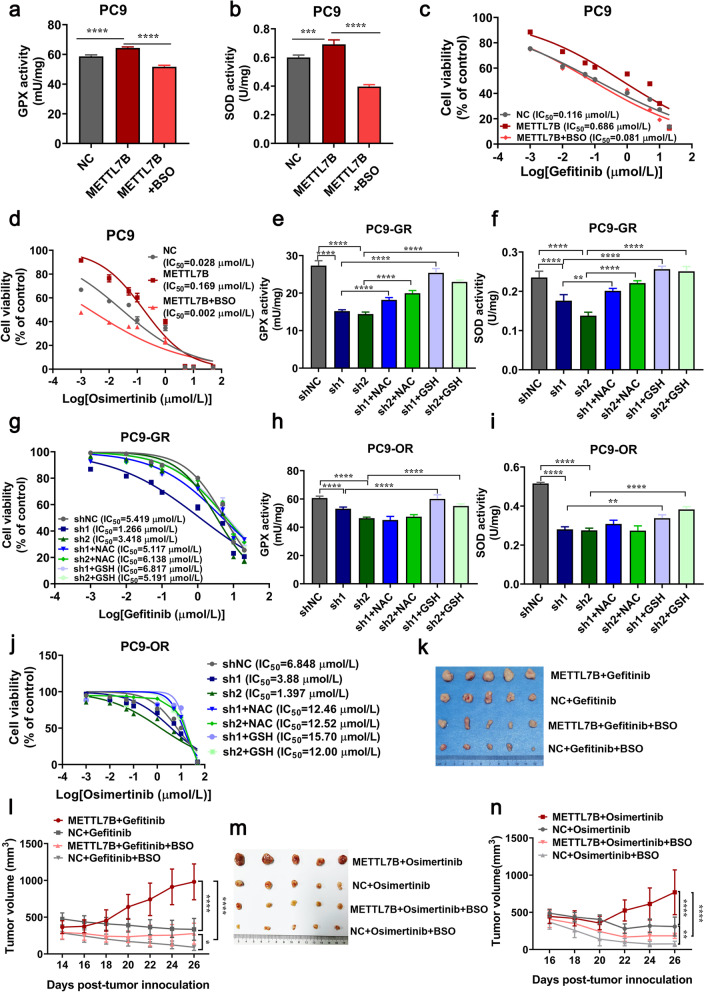Fig. 6.
METTL7B-induced TKIs resistance was associated with ROS scavenging in LUAD cells. a-d FLAG-NC and FLAG-METTL7B was stably transfected into gefitinib-sensitive PC9 cells. The enzymatic activities of GPX (a) and SOD (b) were measured by oxidative stress assay kits with or without BSO (200 μM for 24 h). Cell viability was detected 72 h after treatment of different concentrations of gefitinib (c) and osimertinib (d). e-j shMETTL7Bs were stably transfected into gefitinib-resistant PC9-GR and osimertinib-resistant PC9-OR cells. The enzymatic activities of GPX (e and h) and SOD (f and i) were measured by oxidative stress assay kits with or without NAC (10 mM for 6 h) or GSH (8 mM for 6 h). Cell viability was detected 72 h after treatment of different concentrations of gefitinib (g) and osimertinib (j). k-n PC9 cells with FLAG-METTL7B or FLAG-NC were injected into the flank of BALB/c nude mice to form subcutaneous tumors. The mice with subcutaneously implanted tumors were treated with TKIs (gefitinib and osimertinib) (30 mg/kg, qd, po) or combinations of TKIs and BSO (450 mg/kg, qod, ip) as indicated. The growth of tumors was monitored every 2 d. Tumor volume and body weights were presented as mean ± SD from five mice per group. *P < 0.05, **P < 0.01, ***P < 0.001 and ****P < 0.0001

